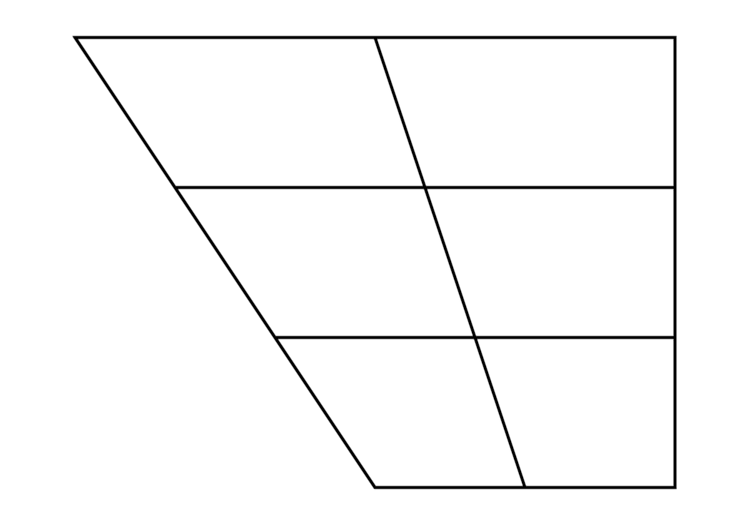IPA number 426 | ||
 | ||
A lateral is an l-like consonant in which the airstream proceeds along the sides of the tongue, but it is blocked by the tongue from going through the middle of the mouth.
Contents
- Examples
- Approximants
- Fricatives
- Affricates
- Flaps
- Ejective
- Clicks
- Ambiguous centrality
- Lateralized consonants
- References
Most commonly, the tip of the tongue makes contact with the upper teeth (see dental consonant) or the upper gum (the alveolar ridge) just behind the teeth (see alveolar consonant). The most common laterals are approximants and belong to the class of liquids, but lateral fricatives and affricates are common in some parts of the world.
The labiodental fricatives [f] and [v] often, perhaps usually, have lateral airflow, as the lip blocks the airflow in the center, but they are nonetheless not considered lateral consonants because no language makes a distinction between the two possibilities. Plosives are never lateral, but they may have lateral release. The distinction is meaningless for nasals and for consonants articulated in the throat.
Consonants are not necessarily lateral or central. Some, such as Japanese r, are not defined by centrality: Japanese r varies allophonically between a central flap [ɾ] and a lateral flap [ɺ].
Examples
English has one lateral phoneme: the lateral approximant /l/, which in many accents has two allophones. One, found before vowels as in lady or fly, is called clear l, pronounced as the alveolar lateral approximant [l] with a "neutral" position of the body of the tongue. The other variant, so-called dark l found before consonants or word-finally, as in bold or tell, is pronounced as the velarized alveolar lateral approximant [ɫ] with the tongue assuming a spoon-like shape with its back part raised, which gives the sound a [w]- or [ʟ]-like resonance. In some languages, like Albanian, those two sounds are different phonemes. East Slavic languages contrast [ɫ] and [lʲ] but do not have [l].
In many British accents (e.g. Cockney), dark [ɫ] may undergo vocalization through the reduction and loss of contact between the tip of the tongue and the alveolar ridge, becoming a rounded back vowel or glide. This process turns tell into something like [tɛɰ], as must have happened with talk [tɔːk] or walk [wɔːk] at some stage. A similar process happened during the development of many other languages, including Brazilian Portuguese, Old French, and Polish, in all three of these resulting in [ɰ] or [w], whence Modern French sauce as compared with Spanish salsa, or Polish Wisła (pronounced [viswa]) as compared with English Vistula.
In central and Venice dialects of Venetian, intervocalic /l/ has turned into a semivocalic [e̯], so that the written word ła bała is pronounced [abae̯a]. The orthography uses the letter ł to represent this phoneme (it specifically represents not the [e̯] sound but the phoneme that is, in some dialects, [e̯] and, in others, [l]).
Many aboriginal Australian languages have a series of three or four lateral approximants, as do various dialects of Irish. Rarer lateral consonants include the retroflex laterals that can be found in many languages of India and in some Swedish dialects, and the voiceless alveolar lateral fricative /ɬ/, found in many Native North American languages, Welsh and Zulu. In Adyghe and some Athabaskan languages like Hän, both voiceless and voiced alveolar lateral fricatives occur, but there is no approximant. Many of these languages also have lateral affricates. Some languages have palatal or velar voiceless lateral fricatives or affricates, such as Dahalo and Zulu, but the IPA has no symbols for such sounds. However, appropriate symbols are easy to make by adding a lateral-fricative belt to the symbol for the corresponding lateral approximant (see below). Also, a devoicing diacritic may be added to the approximant.
Nearly all languages with such lateral obstruents also have the approximant. However, there are a number of exceptions, many of them located in the Pacific Northwest area of the United States. For example, Tlingit has /tɬ, tɬʰ, tɬʼ, ɬ, ɬʼ/ but no /l/. Other examples from the same area include Nuu-chah-nulth and Kutenai, and elsewhere, Chukchi and Kabardian.
Standard Tibetan has a voiceless lateral approximant, usually romanized as lh, as in the name Lhasa.
A uvular lateral approximant has been reported to occur in some speakers of American English.
Pashto has a retroflex lateral flap.
There are a large number of lateral click consonants; 17 occur in !Xóõ.
Lateral trills are also possible, but they do not occur in any known language. They may be pronounced by initiating [ɬ] or [ɮ] with an especially forceful airflow. There is no symbol for them in the IPA. They are sometimes used to imitate bird calls, and they are a component of Donald Duck talk.
Approximants
Fricatives
Only the alveolar lateral fricatives have dedicated letters in the IPA. However, others appear in the extIPA.
Affricates
Flaps
Ejective
Clicks
Ambiguous centrality
The IPA requires sounds to be defined as to centrality, as either central or lateral. However, languages may be ambiguous. For example, Japanese /r/ varies among [ɾ] (especially before /i/), [ɾ̠] (a.k.a. [ɽ], especially before /a/) and [ɺ] (especially before /o/). Transcribing it as either a central flap or a lateral flap is therefore misleading. It is sometimes transcribed with an l–ɾ ligature, ⟨lɾ⟩.
Lateralized consonants
A superscript ⟨ˡ⟩ is defined as lateral release.
Consonants may also be pronounced with simultaneous lateral and central airflow. This is well-known from speech pathology with a lateral lisp. However, it also occurs in nondisordered speech in some southern Arabic dialects and possibly some Modern South Arabian languages, which have pharyngealized nonsibilant /ʪˤ/ and /ʫˤ/ (simultaneous [θ͜ɬˤ] and [ð͡ɮˤ]) and possibly a sibilant /ʪ/ (simultaneous [s͜ɬ]). Examples are /θˡˤaim/ 'pain' in the dialect of Al-Rubu'ah and /ðˡˤahr/ 'back' and /ðˡˤabʕ/ 'hyena' in Rijal Alma'. (Here the ⟨ˡ⟩ indicates simultaneous laterality rather than lateral release.) Old Arabic has been analyzed as having the emphatic central–lateral fricatives [θ͜ɬˤ], [ð͡ɮˤ] and [ʃ͡ɬˤ].
